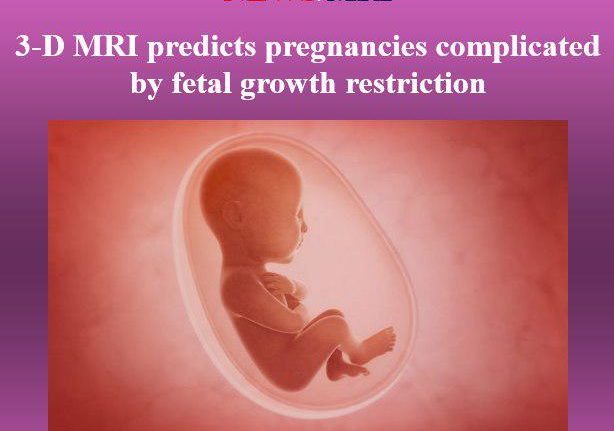Using three-dimensional (3D) magnetic resonance imaging (MRI), the research team characterised the shape, volume, morphometry and texture of placentas during pregnancy and, using a novel framework, predicted with high accuracy which pregnancies would be complicated by foetal growth restriction (FGR).
“When the placenta fails to carry out its essential duties, both the health of the mother and foetus can suffer and, in extreme cases, the foetus can die. Because there are few non-invasive tools that reliably assess the health of the placenta during pregnancy, unfortunately, placental disease may not be discovered until too late – after impaired foetal growth has already occurred,” says Catherine Limperopoulos, co-director of research in the Division of Neonatology at Children’s National Health System and senior author of the study published in the Journal of Magnetic Resonance Imaging.
“Identifying early biomarkers of placental disease that may impair foetal growth and well-being open up brand-new opportunities to intervene to protect vulnerable foetuses.”
The Children’s research team acquired 124 foetal scans from 80 pregnancies beginning at the 18th gestational week and continuing through the 39th gestational week. Forty-six women had normal pregnancies and healthy foetuses while 34 women’s pregnancies were complicated by FGR, defined by estimated foetal weight that fell below the 10th percentile for gestational age. The placenta was described by a combination of shape and textural features. Its shape was characterised by three distinct 3D features: Volume, thickness and elongation. Its texture was evaluated by three different sets of textural features computed on the entire placenta.
The proposed machine learning-based framework distinguished healthy pregnancies from FGR pregnancies with 86 per cent accuracy and 87 per cent specificity. And it estimated the birth weight in both healthy and high-risk foetuses throughout the second half of gestation reasonably well.
“We are helping to pioneer a very new frontier in foetal medicine,” Limperopoulos says. “Other studies have developed prediction tools based on foetal brain features in utero. To our knowledge, this would be the first proposed framework for semi-automated diagnosis of FGR and estimation of birth weight using structural MRI images of the placental architecture in vivo. This has the potential to address a sizable clinical gap since we lack methods that are both sufficiently sensitive and specific to reliably detect FGR in utero.”
The research team writes that its findings underscore the importance of future studies on a larger group of patients to expand knowledge about underlying placenta mechanisms responsible for disturbed foetal growth, as well as to more completely characterise other potential predictors of foetal/placental development in high-risk pregnancies, such as genetics, physiology and nutrition.
For more information: http://www.ogpnews.com/2017/08/3d-mri-predicts-pregnancies-complicated-by-foetal-growth-restriction/22397

